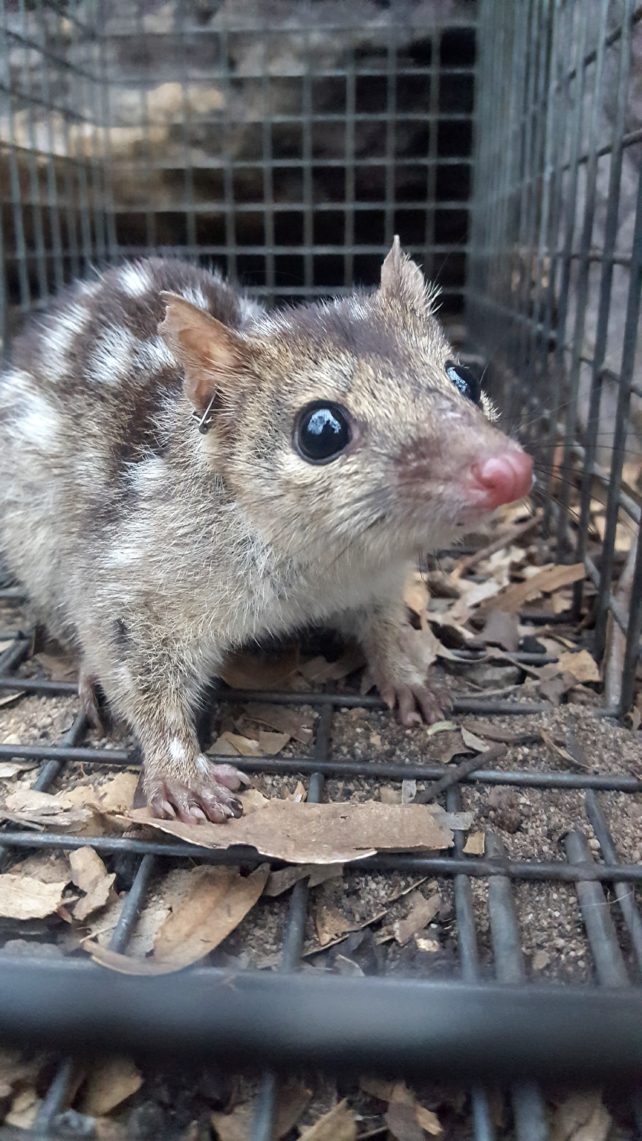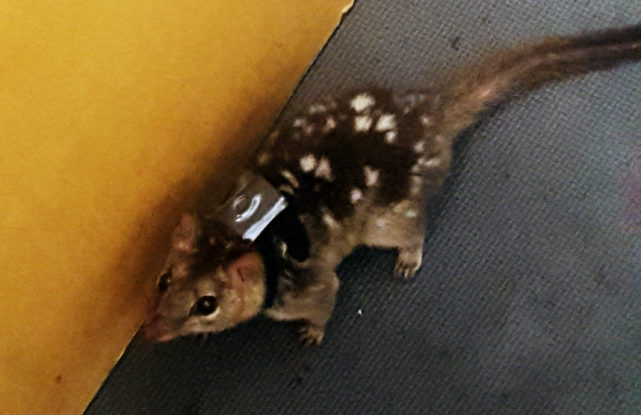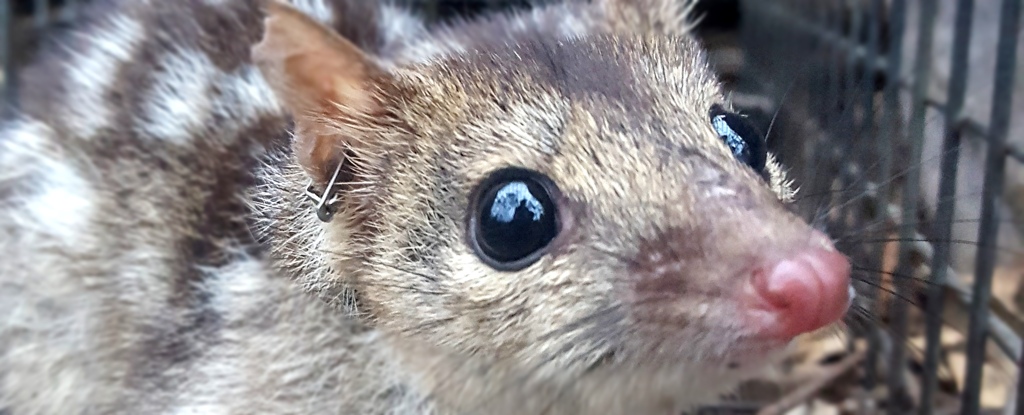Products You May Like
The adorable, white-spotted pink-nosed marsupial that lives in the top half of Australia would rather die than miss out on sex.
During its brief mating window, the males run themselves ragged – then die from exhaustion, a study led by the University of the Sunshine Coast suggests.
The study compared the activity of male and female quolls (Dasyurus hallucatus) during mating season on Groote Eylandt , an island off the coast of the Northern Territory.
The male quolls spent just 8 percent of their time resting compared with 24 percent for females, and 13 percent of their time walking, compared with 9 percent for females.
One male quoll in the study, ‘Moimoi’, traveled 10.4 kilometers (6.5 miles) in one night in search of a mate – an epic journey for the cat-sized carnivore.
The lack of sleep and outpouring of energy during this ‘mating frenzy’ may explain why male northern quolls usually only live for one breeding season, whereas the females live for four.
Sleep deprivation could make male quolls more vulnerable to predators, death from infection, and less able to avoid collisions with cars, said University of Sunshine Coast ecologist Joshua Gaschk, who led the study.
Gaschk nicknamed the athletic quoll ‘Moimoi’ after a legendary Tongan-born Australian rugby player. The last time Gaschk trapped Moimoi, he was in very poor shape and could no longer see properly. Most males live for just a few weeks after breeding.
During the study, 13 wild northern quolls were captured and fitted with a backpack containing a tiny accelerometer and their movements were monitored over 42 days.

Before being released back into the wild, the quolls were observed in a lab for a few minutes so that their movements could be classified into categories, such as ‘resting’, ‘bounding’, ‘galloping’, and ‘walking’.
This data was linked to the accelerometer outputs and used to train a machine learning algorithm. This made it easier to interpret accelerometer readings once the quolls leaped from their calico bags and scurried out of sight.
Several species of marsupials engage in ‘suicidal reproduction’ where they blow all their resources optimizing one breeding season and then die.
This behavior – called semelparity – is also seen in salmon that swim upstream to reproduce once, and mayflies that only live for a day. In these examples, though, both males and females are short lived.
Reproduction is costly, so a single breeding season can be an evolutionary adaptation created to allow individuals to commit more recourses to breeding rather than saving them for future use.
Usually, species that only breed once have many offspring from the one mating season. Quolls usually produce 5-8 offspring per litter.

Another theory to support ‘suicidal reproduction’ is that killing off the males leaves more resources for the new generation, Gaschk told ScienceAlert.
“[In quolls] I would suggest that it’s more of an uncontrollable urge,” he said.
“Like a significant drive that’s brought on by the synchronization of the estrous cycle in the females of the population.”
“And so, the males get the idea that this is the time to breed and just have to go for as long and as hard as possible, because they want to maximize their genetic information being passed to the next generation,” said Gaschk.
The research was published in Royal Society Open Science.
